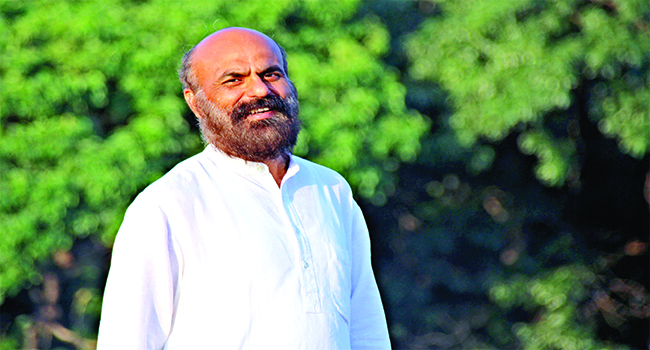When in other parts of the world enquirers were put to death for expressing themselves, free expression was flourishing across Bharat. And, Upanishads are eternally replicable examples of how open and innocent dialogues can keep society free from dogma and in touch with reality

Except Akshar-avyakta-sanaatan-yathaarth (imperishable- inexpressible-eternal reality) everything else is in the incessant flux (pravaah), including vyakt-sanaatan (The existence).
Though, none can express how this ‘avyakta sanaatan’ keeps ‘formless state of the creation in existence, moderating and regulating it, before it appears as the creation in various forms, that too without intervening in the latter’s sovereignty. It appears contradicting that something can be moderated and regulated without influencing its sovereignty but, it’s not so in reality as, contradictions are limited to those actions which take place in the field of dualities. In the oneness operating beyond the field of non-violence above dualities don’t exist. However, on lower levels of our consciousness these can’t be wished away.
Yet, seers realise that there exists a relationship between ‘the imperishable- inexpressible-eternal reality’ and ‘the existence of a formless state of creation’ (amuurt-sanaatan). And, we human beings in the spiritual state of our total transcendence may align with an aforesaid relationship which stays “unknowable-known”. Shad-darshans (six Indic ways of reasoning scientifically) are available before all of us as evidence to experience the truth of this relationship and any open minded seeker can verify that through one’s own experience. Being witness to regulation and moderation of the cosmos is a big deal, even glimpsing it is fulfilling.
It’s the commitment and trust that keeps ‘known’ part of aforesaid relationships fulfilled. Commitment and trust are subtle ingredients of any relationship. And, when these are in place then not being able to express and define its (agyeya) unknowable part stays as sweet mystery in seeking hearts. Contrast it with the paucity of commitment and trust in the ‘known’ where it gives birth to fear, enmity, insecurity etc.
Where there is a relationship, love is present. Can love be defined? And, can we say there is no love in a relationship if it is not defined or it is the other way round? Does a relationship really exist in a true sense if there is no love in it? Where is the abode of love? Is it in the relationship? Or, is it independent of it, expressing itself through it? Ponder over it.
Seers indicate the relationship between Akshar (imperishable-eternal) and Brahm (all pervasive/moving invisible consciousness) is that of love. This relationship is the mother of dharma.
There are many fields (planes of consciousness) of this relationship though. And, our behaviour or actions change according to that plane of consciousness which we are one with.
Those who haven’t realised the ultimate state of consciousness can’t comprehend how cruising through violence or non-violence pose no contradiction to the ones who are awake in swa-dharma.
Seers indicate the relationship between Akshar (imperishable-eternal) and Brahm (all pervasive/moving invisible consciousness) is that of love. This relationship is the mother of dharma
For this state of spiritual realisation to dawn upon us, we need to transcend not only visible multiplicity (vyakt-jagat) but invisible formless multiplicity ( amuurt-sansaar known as devis-devas in Indic traditions) as well.
The Vedic hymns and subsequent Upanishadic literature can be deciphered and experienced by such yogis alone who devote themselves to such a saadhnaa. Because, Vedic literature is imbibed on three levels of consciousness simultaneously. It cannot be understood/experienced/felt in its entirety merely by intellect. Sanaatan guru parampara (unbroken relation manifested through living guru and disciple) preserves this immortal knowledge with perseverance for the ultimate welfare of one and all across the cosmos.
Realised masters say, long ago the whole earth was one land mass and, futurologists feel in the long future it is likely to become one land mass again. Leaving distant past and distant future for future discussions when more evidence is unearthed, we can say that quintessentially India has been the land promoting the spirit of free and fearless inquiry. And, guru-shishya-parampara (master-disciple-relationship) moulded and regulated it in a dignified behavioural system of universal education. Remembering Socrates, Christ, Mansoor we can say when in other parts of the world enquirers were put to death for expressing themselves, free expression was flourishing across Greater India (Bharat-Varsh). And, Upanishads are eternally replicable lovely examples of how open and innocent dialogues can keep society free from dogma and in touch with reality.
(The writer is the propounder of Sahaj Smriti Yog System of Self Realisation and founder of Darpan Foundation and Darpan Ashram)














Comments